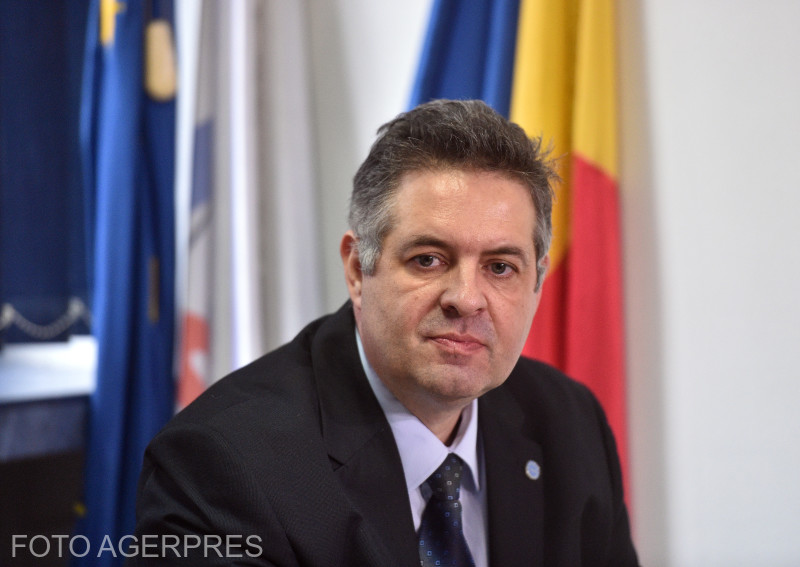
Have you ever wondered why your family doctor does not periodically call you for consultations and preventive examinations, as it happens in other countries? Preventive services currently represent only 1% of the services provided in family doctors’ offices, says Dr. Hindrovel Dumitra, Secretary General of the College of Physicians and one of the most prominent family doctors in Romania, when asked by HotNews.ro.
And this is despite the fact that “family medicine works for a very long time and quite deeply”, and the data on the number of services calculated by the Hospital Fund is ahead, says Hindrovel Dumitra.
But why does this happen? The main focus in family medicine is on acute conditions – about 40% and chronic – almost 60%. Gindrovel Dumitra talks about the “political solution”: “Because shifting the focus of our activities from the chronic component and from acute, minor diseases would mean that they would overwhelm the emergency services, which are already overcrowded,” explains the doctor.
A 15-minute consultation resulted in limited patient access
Gindrovel Dumitra works in Sadova commune in Dolj county, “in a rural area, in an area where there is currently a shortage of doctors, an area that has quite an important ethnic component and which, of course, also has challenges that arise as a result.”
The doctor says that since the introduction of a 15-minute consultation in family medicine, patients’ access to these services has been limited: “When services were paid by consultation and each consultation was considered 15 minutes. , from that moment the population’s access to family medicine services was limited. Why am I saying this? Because, depending on the program we have declared and depending on the possibilities in the territory, at that moment I can pay the Health Insurance Fund 20, 24 or 28 consultations per day.”

Dr. Hindrovel Dumitra
Each family doctor in Romania provides an average of 24 consultations per day
Dr. Gindrovel Dumitra made a series of calculations, starting with the number of services paid by the Health Insurance House in the first quarter of this year: “The amount is somewhere around 14 million services – the data is available on the website of the Health Insurance House. We disaggregated by 9,600 contracts – the data is also available on the CNAS website – and by the number of business days in the first quarter. How many consultations do you think have been agreed to by health insurance companies? 24 a day”.
Consultations for patients with acute conditions take up approximately 40% of the total number, and of the remaining 60%, the majority are consultations for chronic patients: “This is the reality of our offices. In family medicine, we’re talking about oversaturation now in terms of what we’re doing right now, what? For acute diseases – approximately 40%, for chronic diseases – from 40% to 60%, depending on the season we are in and other services that are provided additionally.”
Under these conditions, only 1% remains for preventive consultations: “Preventive services below 1%.” When we want preventive services, we have to think about what we give from the other side. Are we ready for this step now? I’ll just give an example: should I leave a child who came with fever and diarrhea and not do two consultations – one now and one to see what happens next? Or for a patient with chronic diseases, instead of coming in for a prescription once a month or once every two months or once every three months, should I increase the interval in which he receives a consultation with his family doctor?”
These data are available on the website of the National Health Insurance Fund, and “anyone can make the calculations that I made now,” says doctor Hindrovel Dumitra.

“Family medicine has been around for a damn long time and pretty deep”
These data indicate that the work in family medicine is being carried out, says Hindrovel Dumitra: “And it has been carried out for a very long time and quite deeply.” And this often causes dissatisfaction of a part of people who, because of the limitation we have on the number of consultations, cannot get family medicine services.
The doctor emphasizes that it is more about a political decision: “What exactly do we want to highlight in family medicine at the moment and bring as services. But, I repeat, this is a political option. Because shifting the focus of our activities away from the chronic component and away from acute, trivial conditions would mean that they would overwhelm emergency services, which are already overcrowded.”
Can GPs change these things? “Of course, very often we are told: extend your schedule! Instead of 7 hours, let’s make it 8 hours, 9 hours or 12 hours. Well, now 60% of GPs work in shifts. What can be continued? I can’t extend my schedule because a colleague is coming over for lunch. And here there is the problem of infrastructure, which is particularly characteristic of the urban area: this is a very serious problem that needs to be solved, I say, comprehensively, based on analysis, numbers, which will ultimately lead to some solutions aimed at reality,” concludes Hindrovel Dumitra.
Photo sources: Dreamstime.com, Agerpres.
Source: Hot News RO
Robert is an experienced journalist who has been covering the automobile industry for over a decade. He has a deep understanding of the latest technologies and trends in the industry and is known for his thorough and in-depth reporting.